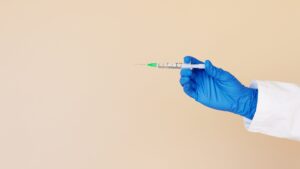Doctors have been showing concern over the negative consequences of opioid use for longer than most of us realize. Take the below doctor’s letter from 1884 as an example.

Terrible results can occur from opioid misuse, however doctors still need to prescribe pain medication. It is a complicated issue.
The opioid epidemic in our country is well documented by the Federal Government, national health groups, and the media at large. Statistics from the Centers for Disease Control and Prevention (CDC), the US Department of Health and Human Services (HHS), and the National Institute on Drug Abuse reveal:
- In 2016, 214 million prescriptions for opioid pain medication were written.
- Every day, more than 1,000 people are treated in emergency departments for misusing prescription opioids.
- More than 47,600 Americans died of drug overdoses involving opioids in 2017.
- The CDC estimates the total economic burden of prescription opioid misuse in the US is $78.5 billion a year, including the costs of health care, lost productivity, addiction treatment, and criminal justice involvement.
The CDC, the American College of Physicians, and the National Academies of Sciences, Engineering, and Medicine all strongly urge health practitioners to refer non-cancer patients to try nondrug options, such as physical therapists (PT), for pain management to help cut down on the incredible rates of addiction.
What actions are doctors taking to help curb the crisis?
Subscribing Alternative Pain Management
There are a number of non-opioid options for pain that are both over-the-counter and prescribed, to include:
- Tylenol/Acetaminophen
- Ibuprofen, Aspirin or other Non-steroidal anti-inflammatory drugs (NSAIDs)
- Naproxen
- Antidepressants
Many physicians, such as St Francis’ Dr. Kevin Mewborn who has worked in both prescribing opioids and treating opioid addiction, strongly recommend natural pain treatments such as heat, physical therapy, and even meditation. (Dr. Mewborn also urges that those who use subscription opioids keep the emergency drug Naloxone on hand to use in the event of an overdose by the patient or others in the home.)
Some pain patients have success with acupuncture, injections, or nerve blocks. Surgery can also be an option for chronic pain patients when alternative treatments fail. These patients may require pain medication in the short-term, post-operation, but they will have a chance at living a life without relying on daily opioids.
As the opioid epidemic rages on, more research is going into developing more non-opioid alternatives. High-tech methods are also evolving for pain management. Some of the latest methods and methods on the horizon include:
- Radio waves
- Nerve blocks
- Electrical signals/stimulation
- Spinal cord stimulation
- Pain pumps
- Stem cell applications
Giving doctors more options to manage patient pain will help curb future addictions and make a positive difference in America’s current crisis with opioids.
Understand Addiction & Withdrawal
There are those that are calling for more addiction and withdrawal education for doctors. Groups like Aetna and Alosa Health are investing millions of dollars in counter-programming strategies – information that is the direct opposite of the sales pitches doctors have been hearing for years from pharmaceutical reps. Kaiser Permanente and the Department of Veteran Affairs are also employing this strategy. The goal is to educate doctors about the risks of opioids and the alternatives in pain management.
Education about withdrawal is also important for doctors. There are concerns that “aggressive reduction” of opioids can hurt patients. Doctors need healthy strategies to help those patients who may be addicted or are at risk of becoming addicted.
Along with doctor education, it would be useful if legislatures had more education on addiction and withdrawal as well. A lot of legislation coming out is limiting how much opioids a doctor can prescribe at one time. Unfortunately this does not take into consideration a patient’s metabolism. Not everyone is affected in the same way by a particular amount of opioids in their system, much like how alcohol affects people in varying ways.
Additionally there are practical issues that can arise for patients that drug limitations ignore. For an example, a patient coming out of major surgery mid-week will run out of pain medication by the weekend, and be left to suffer until their physician’s office is open to access a fresh prescription.
Harm Reduction Strategies
Another avenue to cutting down on the amount of those addicted to opioids is through a concept called harm reduction. Harm reduction is an empathic approach whereby the negative consequences of drug use is minimized. This approach can include non-judgemental education, pain contracts and accountability measures between doctor and patient, and prescription drug monitoring programs (PDMPs). A good example of this strategy is doctors making Naloxone available to opioid users.
Other Ideas To Help
- Stay Informed
Doctors who wish to make a real difference in the opioid crisis should stay current with the alternative drugs and pain management methods that are coming out. This gives them more tools in their pain management toolbelt. - Develop an Audit Process
Create a process for detecting system errors that may be resulting in over prescribing. Perhaps a frequent internal or even third-party consultation/audit can achieve this. - Do Not Support Opioid Marketing
Where possible, practices should stop allowing drug companies to use them as a storefront. Unfortunately there is a high correlation between pharmaceutical rep giveaways in a region and the number of opioid related overdoses. Additionally, this practice is being monitored more by prosecutors, so it is a good idea to steer clear from accepting gifts from drug companies.










